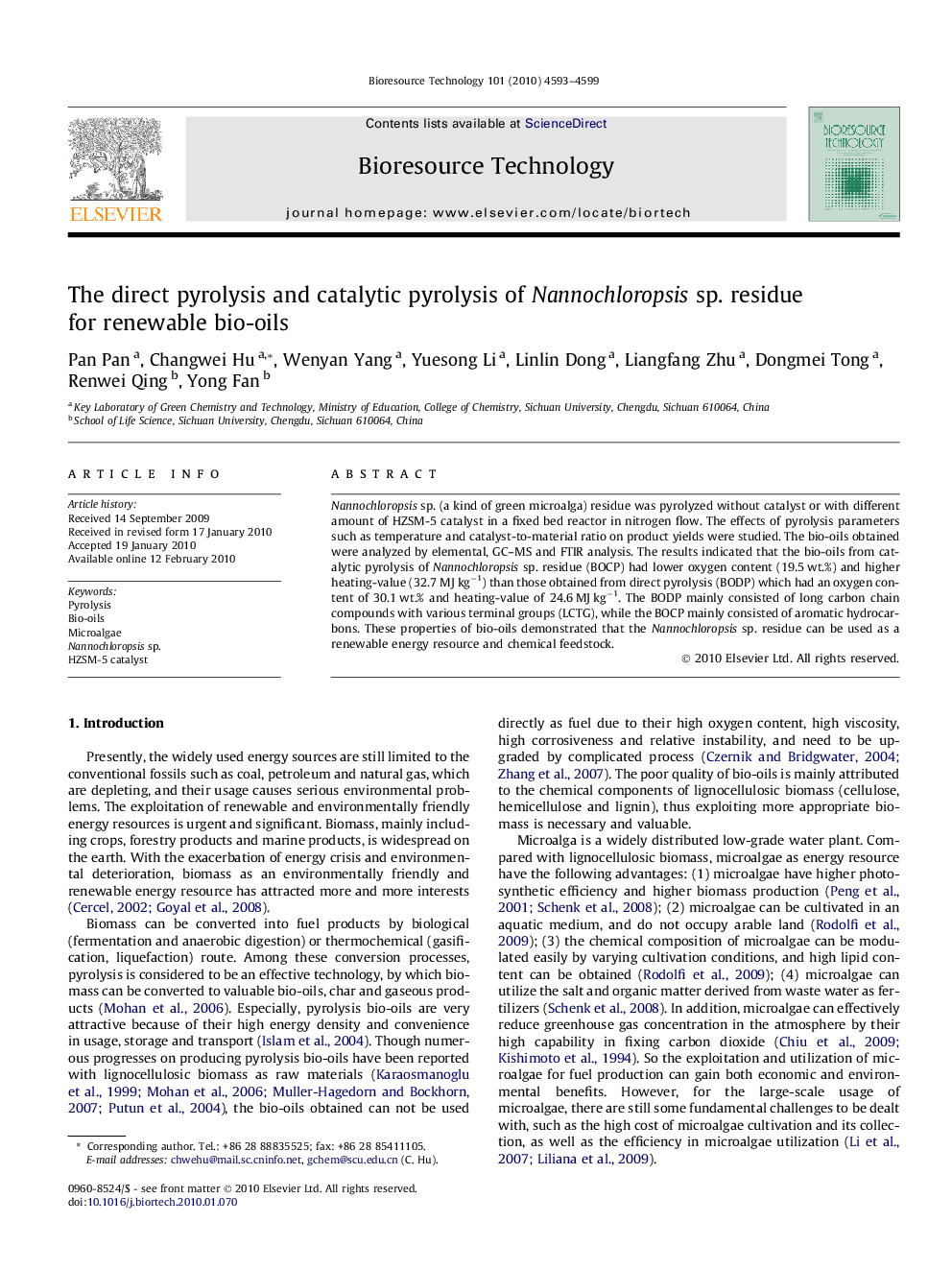| Article ID | Journal | Published Year | Pages | File Type |
|---|---|---|---|---|
| 10395652 | Bioresource Technology | 2010 | 7 Pages |
Abstract
Nannochloropsis sp. (a kind of green microalga) residue was pyrolyzed without catalyst or with different amount of HZSM-5 catalyst in a fixed bed reactor in nitrogen flow. The effects of pyrolysis parameters such as temperature and catalyst-to-material ratio on product yields were studied. The bio-oils obtained were analyzed by elemental, GC-MS and FTIR analysis. The results indicated that the bio-oils from catalytic pyrolysis of Nannochloropsis sp. residue (BOCP) had lower oxygen content (19.5Â wt.%) and higher heating-value (32.7Â MJÂ kgâ1) than those obtained from direct pyrolysis (BODP) which had an oxygen content of 30.1Â wt.% and heating-value of 24.6Â MJÂ kgâ1. The BODP mainly consisted of long carbon chain compounds with various terminal groups (LCTG), while the BOCP mainly consisted of aromatic hydrocarbons. These properties of bio-oils demonstrated that the Nannochloropsis sp. residue can be used as a renewable energy resource and chemical feedstock.
Related Topics
Physical Sciences and Engineering
Chemical Engineering
Process Chemistry and Technology
Authors
Pan Pan, Changwei Hu, Wenyan Yang, Yuesong Li, Linlin Dong, Liangfang Zhu, Dongmei Tong, Renwei Qing, Yong Fan,
